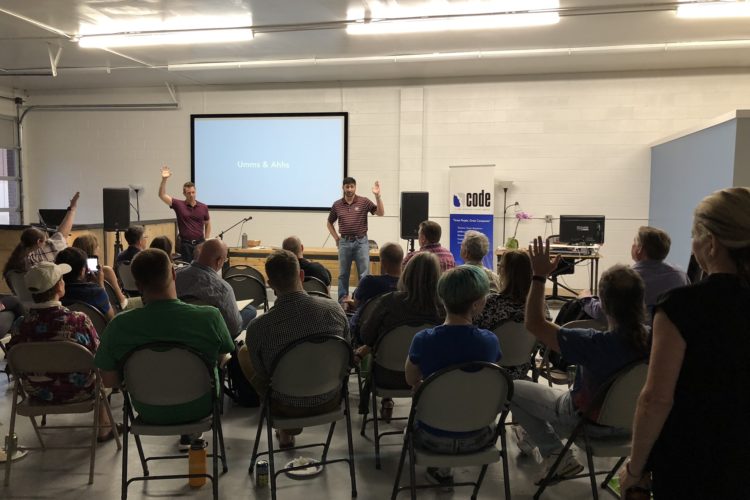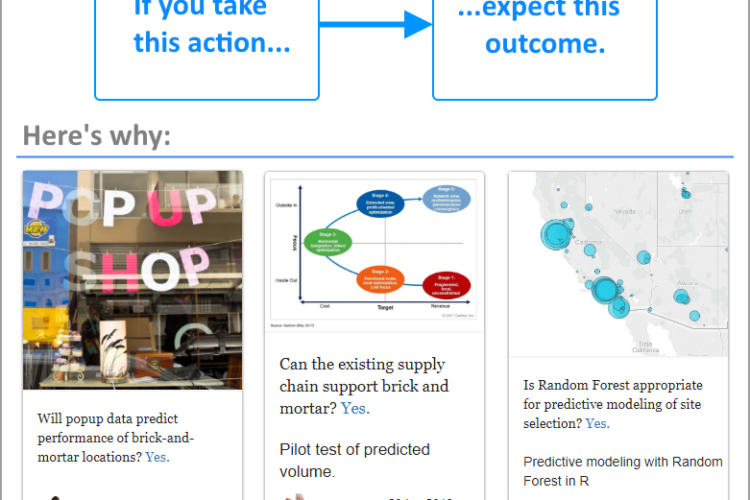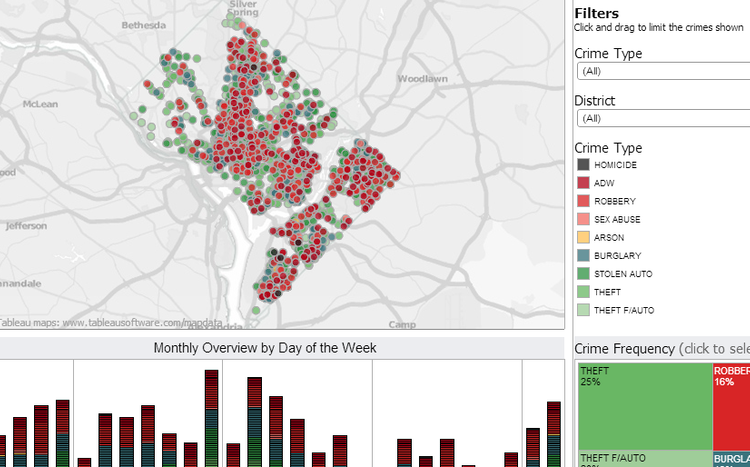To cut through AI complexity, focus on decisions. Never has it been more important to effectively explain complex concepts. Technology is influencing most decision processes, not always transparently so. On the bumpy road toward explainable AI (XAI), we find great communication options, from printed materials to state-of-the-art experiences. But where do you start, or know […]
Jerry Seinfeld was wrong when he claimed public speaking is our #1 fear. I’m pretty sure we’re more afraid of having our decisions scrutinized. Adding to the fun, now algorithmic decisions are under pressure too. It is rather painful to have decisions second-guessed before the numbers come in, and even worse if things go pear-shaped. […]
Present everything better! As co-organizer of the meetups Papers We Love – Denver and Domain-Driven Design – Denver, I was delighted to co-host PitchLab for a talk on presentation skills. Jay Mays and Keefer Caid-Loos did an excellent job explaining how to connect with your audience. Participants were engaged, and appreciated PitchLab’s approachable, ask-me-anything attitude. The […]
1. Prior experience → More trust In Trustworthy Data Analysis, Roger Peng gives an elegant description of how he evaluates analytics presentations, and what factors influence his trust level. First, he imagines analytical work in three buckets: A (the material presented), B (work done but not presented), and C (analytical work not done). “We can […]
1. Biased analysis → Misunderstood cause-effect In Biased Ways We Look at Poverty, Adam Ozimek reviews new evidence suggesting that food deserts aren’t the problem, behavior is. His Modeled Behavior (Forbes) piece asks why the food desert theory got so much play, claiming “I would argue it reflects liberal bias when it comes to understanding […]
1. Hire analytics translators → Keep data scientists happy An emerging role – what some call the Analytics Translator – is offloading burden from data scientists, while helping business executives get better value from their technology investments. A recent HBR piece explains You Don’t Have to Be a Data Scientist to Fill This Must-Have Analytics […]
Ugly Research offers a new guide, Promoting Evidence-Based Insights. Practical tips for presenting content with four essential characteristics: Top-line, evidence-based, bite-size, and reusable. Communicate quickly and powerfully by demonstrating value to decision makers. Show how A → B. So people don’t think tl;dr or MEGO (My Eyes Glaze Over), be sure to emphasize insights that […]
Technology helps us discover meaningful patterns: Buying behavior, criminal activity, health effects. But when we succumb to pretty pictures and mindless measurement, shiny data fails to help answer important questions. Source: Tableau. This data visualization tool would be great for someone seeking crime stats – say, for law enforcement or house buying. But it doesn’t […]
Our founder, Tracy Allison Altman, will talk about cognitive bias and behavioral economics for software design @ Papers We Love – Denver. Tversky and Kahneman’s classic “Judgment under Uncertainty: Heuristics and Biases” challenged conventional thinking about bias in decision making, inspiring new approaches to cognitive science, choice architecture, public policy, and the underlying technology. Join […]
There’s plenty of advice about designing presentations. But little of it prepares you for delivering complex evidence to senior-level decision-makers. This should help. How might your evidence help someone understand the steps required to reach an important goal? 1. Put together lean evidence, embracing lean management concepts. As explained by the Lean Enterprise Institute, “The […]








